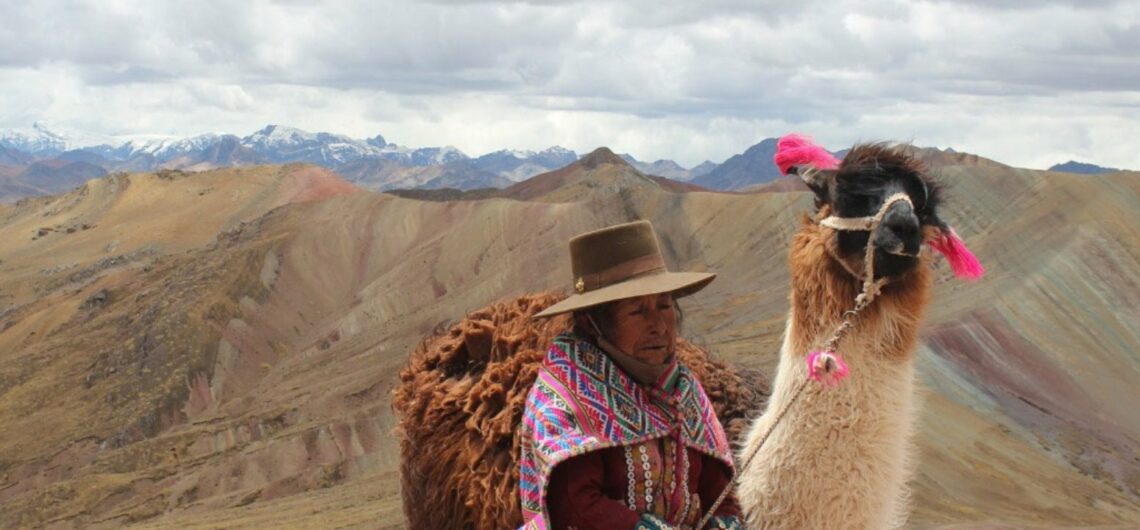The camelids Camelids are mammals that originated from North America. They disappeared from the North American continent as they spread to South America, Asia and Africa, where they survived to give rise to modern species. Do you really know the difference between the four different camelids present in Peru? Se llama llama ¡Se llama llama! means his name is lama. The llama is the animal most associated with Peru. It is the tallest of the four South American camelids, with an average height of 190 cm. As an adult, it weighs about 110 kilos. It can be recognised by its slender silhouette, its extended legs and neck and its hair of different shades. The llama was domesticated 4,500 years ago and lives mainly in Argentina, Bolivia, Chile, Ecuador, and Peru. It is used as a carrying animal and can carry up to 24 kg. It is also raised for its meat, leather, and wool. The latter is thick and is used to make ropes, carpets, etc. Llamas are shorn every two years and produce about 3.5 kg of wool per shearing. Their excrement is also used as fuel! These animals live during the day and usually in herds of one dominant male, several females and their young. Llamas have a gestation period of about 11.5 months. These camelids are herbivores, i.e., they feed on grasses, which they chew for a long time in order to improve the digestion process. However, they drink very little. This is because they are very well adapted to their environment. In the dry season in the Andes, it never rains, and these camelids have become used to these extreme conditions! In addition, it has been observed that llamas have blood with a lot of haemoglobin, which allows them to adapt to the high altitudes, where
The camelids Camelids are mammals that originated from North America. They disappeared from the North American continent as they spread to South America, Asia and Africa, where they survived to give rise to modern species. Do you really know the difference between the four different camelids present in Peru? Se llama llama ¡Se llama llama!

